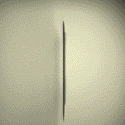
Drew Struzan, the visionary illustrator behind cinema’s most enduring posters, from Star Wars and Indiana Jones to Blade Runner and Back to the Future, has died at 78.
The news was shared via a statement from longtime collaborator Greg Aronowitz, who posted on Struzan’s Instagram that the artist “moved on from this world” on October 13 and often spoke of the joy he felt knowing how deeply fans cherished his work. Earlier this year, reports noted Struzan had been living with Alzheimer’s disease and had stepped away from painting and public appearances.
Struzan’s path to movie history began in the music world, crafting album art for The Beach Boys, Bee Gees, Earth, Wind & Fire, and Alice Cooper. By the mid-1970s, he was painting one-sheets for low-budget genre fare like Empire of the Ants and Squirm.
Everything changed in 1978 when he was tapped to create a poster for the Star Wars re-release—a commission that helped define a signature, photoreal style steeped in warmth, composition, and narrative promise.
With the passing of Drew Struzan, the prolific movie poster illustrator leaves behind a legacy of iconic film visuals from Star Wars to Indiana Jones and beyond. https://t.co/NmDw8I2Q2v pic.twitter.com/uazMKtFk6g
— Star Wars (@starwars) October 15, 2025
Filmmakers who partnered with him across decades paid tribute to his singular impact. “Drew made event art,” said Steven Spielberg. “His posters made many of our movies into destinations…and the memory of those movies and the age we were when we saw them always comes flashing back just by glancing at his iconic photorealistic imagery. In his own invented style, nobody drew like Drew.”
George Lucas added, “Drew was an artist of the highest order. His illustrations fully captured the excitement, tone, and spirit of each of my films, his artwork represented. His creativity, through a single illustrated image, opened up a world full of life in vivid color…even at a glance.”
In a 2021 interview, Struzan described his process as chasing feeling as much as story, finding the best in what directors were aiming for, assembling palettes and faces into open-ended compositions that invited audiences to dream. That’s the magic of his posters: not just selling a movie, but bottling an era, a mood, a myth. For generations of film lovers, a Drew Struzan image wasn’t marketing, it was a memory you could hang on the wall.

REELated:
Bette Midler leads tributes to ‘extraordinary’ Diane Keaton












